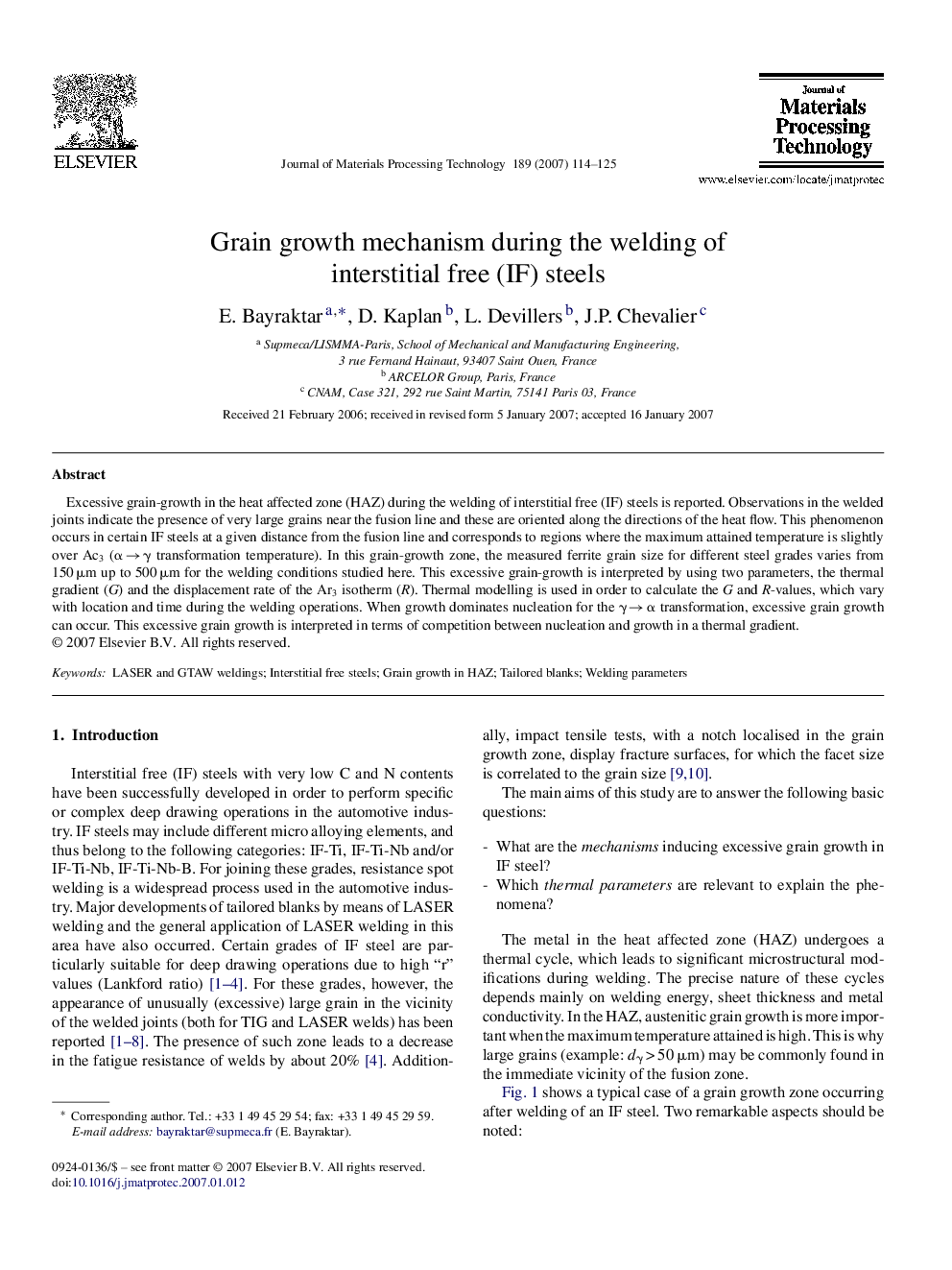| Article ID | Journal | Published Year | Pages | File Type |
|---|---|---|---|---|
| 795721 | Journal of Materials Processing Technology | 2007 | 12 Pages |
Excessive grain-growth in the heat affected zone (HAZ) during the welding of interstitial free (IF) steels is reported. Observations in the welded joints indicate the presence of very large grains near the fusion line and these are oriented along the directions of the heat flow. This phenomenon occurs in certain IF steels at a given distance from the fusion line and corresponds to regions where the maximum attained temperature is slightly over Ac3 (α → γ transformation temperature). In this grain-growth zone, the measured ferrite grain size for different steel grades varies from 150 μm up to 500 μm for the welding conditions studied here. This excessive grain-growth is interpreted by using two parameters, the thermal gradient (G) and the displacement rate of the Ar3 isotherm (R). Thermal modelling is used in order to calculate the G and R-values, which vary with location and time during the welding operations. When growth dominates nucleation for the γ → α transformation, excessive grain growth can occur. This excessive grain growth is interpreted in terms of competition between nucleation and growth in a thermal gradient.
